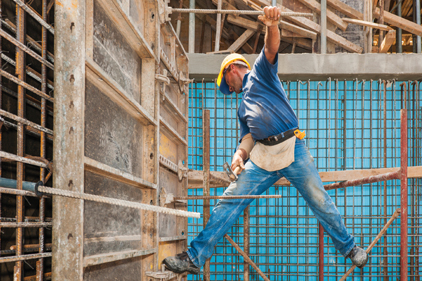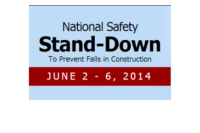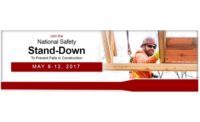This year our efforts reached a scale not seen before, with a nationwide Safety Stand-Down organized the first week of June. Construction firms across the nation halted work briefly to focus on fall prevention with toolbox talks, equipment checks and safety demonstrations.
“This is an unprecedented event. Tens of thousands of employers and hundreds of thousands of workers across the country have joined our campaign to save lives and prevent fatal falls in the construction industry,” said U.S. Secretary of Labor Thomas E. Perez. “The economy is on the rebound, housing starts are on the rise, and the summer construction season is getting underway. Now is the time to focus on this vital safety issue and make sure all construction workers come home at the end of every workday.”
Nearly every working day, somewhere in the nation, a construction worker dies on the job in a fall. Year after year, falls are the single greatest killer in our industry, accounting for one out of three occupational fatalities. And every year more than 10,000 construction workers experience serious injuries from a fall.
Fall fatalities
Fall fatalities take a severe toll in commercial, civil and industrial construction, despite the significant investments of time and resources contractors and labor unions have devoted to promoting safe practices. Sadly, the situation is even worse in residential construction, where small firms abound and cutthroat competition can lead to cutting corners on safety.
Not long ago, I worked with the CPWR Data Center, and several other colleagues inside and outside of the CPWR family, to take a long, hard look at fall fatalities in this sector. Fatal falls in the U.S. residential construction industry, based on this research, recently appeared in the American Journal of Industrial Medicine. What we found was alarming.
- Almost half the fatalities in residential construction were from falls. In residential roofing, falls were responsible for four out of five fatalities.
- Vulnerable populations suffered disproportionately. Workers in residential construction who were older than 55 years, foreign-born Hispanics, or employed in small establishments (ten employees or fewer) were in particular danger.
- Falls from ladders were significantly more frequent in residential construction than commercial construction.
Self-employed workers (that is, independent contractors) accounted for approximately one-third of fatal falls in residential construction. Why does that worry me? Workers’ compensation insurance is for employees, not independent contractors; when a self-employed worker suffers death or debilitating injury, a family is often left destitute. And OSHA regulations cover employees, but not independent contractors – if we want to reduce injuries and fatalities in this sector, we need to find some creative new tools and techniques.
Next steps
The 2014 Safety Stand Down is in our rear view mirror, but the Campaign to Prevent Construction Falls continues. And you can help.
The campaign’s website, www.StopConstructionFalls.com, should be the first stop for those who seek quality materials like toolbox talks, handouts, training materials and more. Participants can join at any level that fits their needs, from using campaign materials for training to promoting the campaign by linking their website to www.StopConstructionFalls.com. For those who want to more fully engage, other opportunities are listed on the site.
If you have ideas for the campaign or simply want to respond to what you saw on the Stop Construction Falls website, please email us at falls@cpwr.com.
This column was provided by CPWR – The Center for Construction Research and Training, the research and training arm of the BCTD. CPWR’s research is made possible through a cooperative agreement with the National Institute for Occupational Safety and Health, NIOSH (OH009762). The contents of this column are solely the responsibility of the author and do not necessarily represent the official views of NIOSH.






